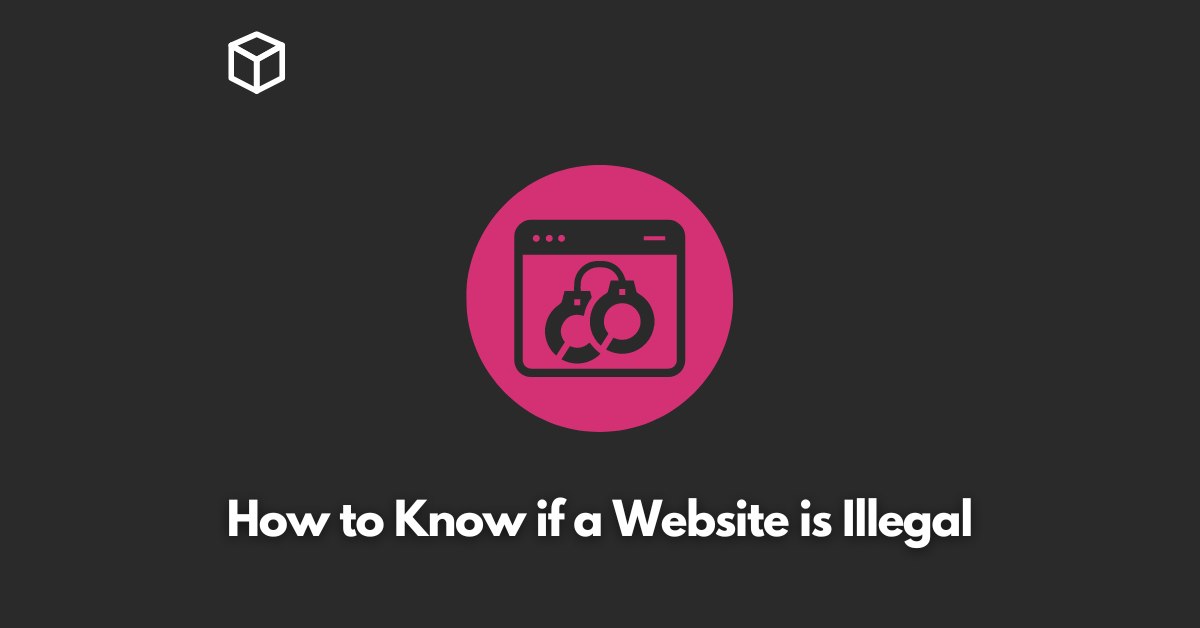In today’s digital age, it’s more important than ever to be aware of illegal websites.
These websites can be used for a variety of illegal activities such as copyright infringement, selling counterfeit goods, distributing illegal drugs, child pornography, human trafficking, and fraudulent or phishing activities.
These types of websites not only break the law, but they can also harm individuals and businesses.
The internet is a vast and open space where anyone can access and create a website, but it also means that it’s easy for illegal activities to be conducted online.
The purpose of this article is to educate individuals on the different types of illegal websites and how to identify them, as well as what to do if you come across one.
Types of Illegal Websites
There are many different types of illegal websites, each with their own unique dangers.
One of the most common types is copyright infringement, where websites illegally distribute copyrighted material such as movies, music, and software.
Another type of illegal website is one that sells counterfeit goods, such as fake designer handbags or knockoff electronics.
Websites that distribute illegal drugs, such as opioids or other controlled substances, are also illegal.
Child pornography and human trafficking websites are not only illegal, but they are also morally reprehensible.
Lastly, fraudulent or phishing websites are designed to trick individuals into providing personal information, which can then be used for identity theft or other fraudulent activities.
How to Identify Illegal Websites
It can be difficult to tell if a website is illegal just by looking at it. However, there are some red flags to watch out for.
One of the most obvious red flags is spelling errors or poor grammar on the website.
Suspicious domain names, such as ones that are very similar to legitimate websites, can also be a warning sign. Additionally, unprofessional design or layout can also be a red flag.
Another way to identify illegal websites is to look for warning signs.
Pop-up ads or requests for personal information, such as passwords or credit card numbers, are often a sign of an illegal website.
Additionally, if a website is offering something that seems too good to be true, it probably is.
Lastly, there are a number of online tools that individuals can use to check for known illegal websites.
The U.S. government’s “Get Cyber Safe” website is a great resource for identifying illegal websites.
Additionally, the Internet Watch Foundation is another organization that maintains a list of known illegal websites.
What to do if You Come Across an Illegal Website
If you come across an illegal website, it’s important not to engage with it or provide any personal information.
Instead, report the website to the appropriate authorities.
Depending on the type of illegal website, you can report it to organizations such as the FBI, the Federal Trade Commission, or the National Center for Missing and Exploited Children.
It’s also important to be aware that simply visiting an illegal website may be a crime in some jurisdictions.
Even if you didn’t know that the website was illegal, you could still be held responsible.
Therefore, it’s important to be aware of the risks associated with visiting illegal websites and to take appropriate precautions.
Conclusion
Illegal websites can cause serious harm to individuals and businesses. It’s important to be aware of the different types of illegal websites and how to identify them.
Additionally, it’s important to know what to do if you come across an illegal website.
By being aware of these issues and taking appropriate precautions, individuals can help protect themselves and others from the dangers of illegal websites.




